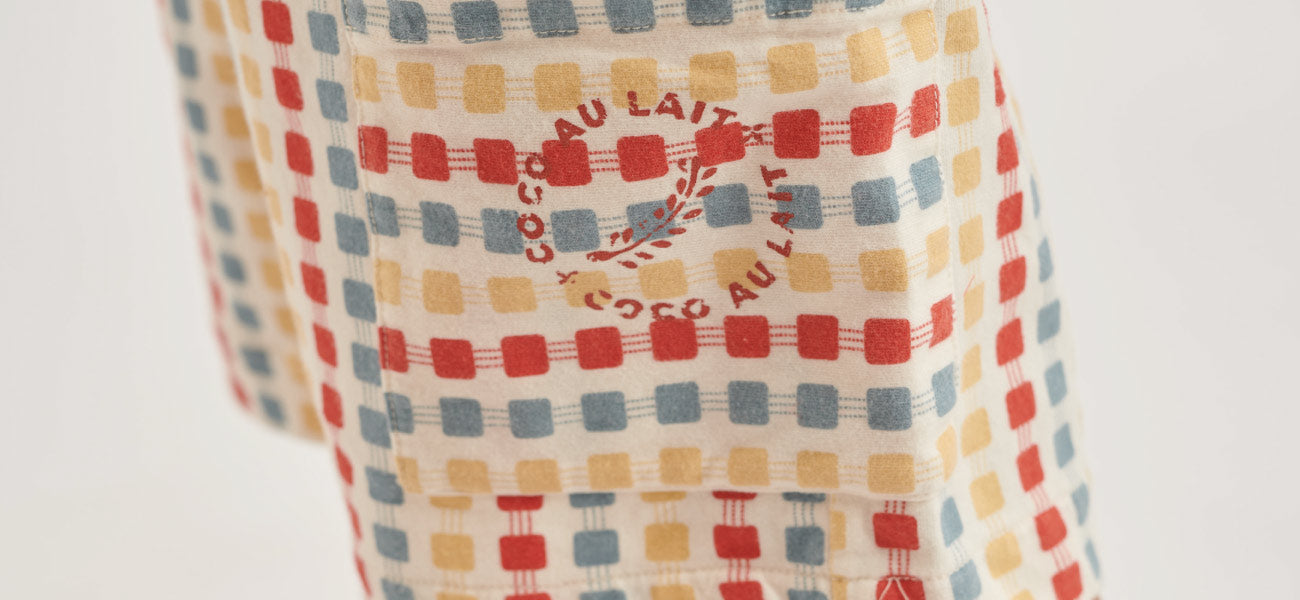
Best fabric for kids' clothes - types and why
When it comes to selecting clothes for your little ones, the fabric plays a crucial role in ensuring their comfort, safety, and durability. As savvy parents, we understand the importance of making informed decisions about the types of fabrics you choose. That's why at Coco Au Lait, our children's clothing line places utmost importance on safety, comfort, and eco-friendliness. We meticulously craft our clothes using non-toxic, eco-friendly materials to ensure both comfort and safety for your children.
Types of fabrics for kids' clothes
The fabric selected for kids' clothing entails three essential criteria: comfort, safety, and sustainability.
- Comfort stands as a primary factor, given that children require garments that enable unhindered movement and provide a sense of ease during various activities.
- Safety is of utmost importance, hence our preference for non-toxic materials that are gentle on the delicate skin of children, steering clear of any elements that might cause irritation or harm.
- Furthermore, sustainability holds a pivotal role in our selection process; we prioritize eco-friendly fabrics such as organic cotton, wool, and Bambula, consciously reducing our environmental footprint for a healthier future.
Would you like to explore the most ideal materials for your child's clothing? Keep reading!
Cotton: natural and breathable
Cotton is a beloved choice for children's clothing due to its breathability, softness, and hypoallergenic properties. It allows air circulation, keeping your child's skin cool and reducing the risk of irritation. Plus, it's easy to wash, making it a practical choice for busy parents.
At Coco Au Lait, we go the extra mile by embracing organic cotton. We use 100% organic cotton double gauze and organic cotton yarn. Our garments are free from harmful chemicals and pesticides, providing your little ones with a safe and comfortable option. They also include structured fabrics made of 79% cotton and 21% viscose, offering both comfort and durability. The printed garments, dyed with a GOTS certificate, originate from a Barcelona fabric house with local production.
We use premium materials such as poplin in 100% viscose and locally produced premium plain knit and fleece made in Barcelona. The organic cotton and quilted finish ensure softness and comfort for your child.
Wool: warm and comfortable
For colder climates or winter wear, wool is an absolute winner. This natural insulator provides warmth without being bulky, keeping your child comfortable and snug. What's more, wool is naturally flame-resistant and wicks moisture, keeping your little one dry and cozy.
At Coco Au Lait, we incorporate high-quality recycled wool blends in our winter collection, ensuring your child has the perfect blend of warmth, comfort, and safety.
Bambula: luxuriously soft texture
Known for its exceptional qualities, Bambula is a double gauze cotton fabric that offers an incredibly light, airy, and flowing texture. Its construction results in a fabric that is perfect for children's clothing, especially for those with sensitive skin.
Like cotton, Bambula fabric offers exceptional breathability. Its double-layer design allows air to circulate, keeping your child's body cool and reducing the risk of skin irritation, especially in warmer weather.
The pros and cons of common fabrics
Understanding the benefits and drawbacks of different fabrics is essential when selecting kids' clothes. Let's take a closer look:
Benefits and drawbacks of cotton
Cotton's breathability and softness make it a top choice. However, keep in mind that it may shrink if not cared for properly and can wrinkle more than synthetic fabrics.
Advantages and limitations of synthetic fabrics
Synthetic fabrics such as polyester offer durability and ease of care, but they may not be as breathable as natural fibers and can be uncomfortable, especially in warmer weather.
Why natural fibers are preferred
When it comes to our little ones, we prefer natural fibers like cotton and wool due to their breathability, comfort, and reduced risk of skin irritation or allergic reactions compared to synthetic materials.
Practical tips for selecting kids’ clothing
Selecting children's clothing involves considering comfort, safety, and suitability. Here are some practical tips to guide you:
Reading labels and understanding fabric content
- Check labels: Read clothing labels to understand fabric content and care instructions. Organic fabrics such as cotton or bamboo are often preferred for their natural, non-toxic properties.
- Comfort is key: Choose fabrics that are soft, breathable, and gentle on the skin. Fabrics such as cotton, bamboo, or blends of natural fibers offer comfort and flexibility, allowing children to move freely as they play and explore.
- Consider the season: Choose clothes that are appropriate for the weather. Lightweight and breathable fabrics like cotton are great for warm weather, while wool or fleece can provide warmth in colder seasons.
- Prioritize safety: Look for clothing without small parts that can pose a choking hazard; make sure buttons are securely fastened; and avoid drawstrings on clothing for younger children to prevent accidental entanglement.
- Ease of care: Children's clothing should be easy to wash and care for. Look for fabrics that are machine washable and durable enough to withstand frequent laundering without losing their shape or color.
- Room to grow: Kids grow quickly. Consider buying slightly larger sizes or clothes with adjustable features, such as elastic waistbands, to allow room for growth and ensure longer wear.
- Functionality: Choose clothes that are appropriate for your child's activities. Look for stretchy and flexible fabrics for playtime, and consider stain-resistant options for messy eaters.
Balancing cost with quality and comfort
Ensuring your child's comfort and safety doesn't necessarily mean breaking the bank. Here's how to strike the right balance:
- Quality over quantity: Invest in a few high-quality staple pieces rather than numerous cheaper items. Quality clothing tends to last longer, withstand multiple washes, and maintain its shape, making it a cost-effective choice in the long run.
- Evaluate fabric durability: Check the durability of the fabric. Quality fabrics may cost more initially, but they are less likely to wear out quickly, offering better value for money. Fabrics like cotton, denim, and certain blends are known for their durability.
- Assess versatility: Opt for versatile pieces that can be mixed and matched with different outfits. Items like neutral-colored tops or bottoms can be paired with various clothing, extending their wearability and value.
- Prioritize comfort: While considering costs, never compromise on your child's comfort. Pay attention to seams, tags, and fabric softness to ensure your child feels at ease wearing the clothing.
Remember that choosing children's clothing is a balancing act between comfort, safety, durability, and style. By keeping these practical tips in mind, you can ensure that your child's wardrobe meets their needs while keeping them comfortable and safe.


